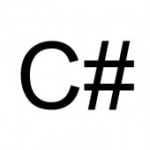Windows applications: Icons and the Shell; names, sizes, etc.
When adding Icons to your Windows applications a few things matter.
Selecting the icon resource
The icon selected by the Windows Shell (for modern Windows versions usually Windows Explorer), is the one with the lowest ID. When there is no icon with an ID, it selects the icon with the lowest name.
Icons in Windows can have both IDs and names. Even though API calls like LoadIcon have an lpIconName parameter, you can convert the ID to a name using MAKEINTRESOURCE.
There is a difference between the format of an ICO file and the icon resource (technically two things: RT_GROUP_ICON resource directory and an RT_ICON resource for each image) contains a list of icon images.
The selection process is on the RT_GROUP_ICON, and then within the group on the ICON itself.
For the RT_GROUP_ICON process, modern Windows versions still use the algorithm used by Windows 95 (not that by Windows NT):
Windows NT simply chooses the first resource listed in the application’s RC script. On the other hand, Windows 95’s algorithm is to choose the alphabetically first named group icon if one exists. If one such group resource does not exist, Windows chooses the icon with the numerically lowest identifier.
For a Delphi application the icon shown must be named MAINICON, since the below source fragment has been in TApplication.Create(…) like forever:
FIcon.Handle := LoadIcon(MainInstance, 'MAINICON');
Which means that if you want the Windows Shell (usually Explorer) to select that one, all other icon resources in your executable must have names that sort after MAINICON.
Selecting the icon within a resource
For the individual icon, the process is more complex. Even the summary is. To summarise the summary to select an icon for the requested size:
- Prefer the image closest in size.
- When more images of that size are present, match on the best color depth for the display.
- When no color depth matches, prefer the image with the greatest color depth not exceeding the color depth of the display.
- When all exceed the color depth, prefer the lowest color depth.
For color depth, treat 8 or more bits per pixel as equal. So there is no advantage of including a 16×16 256-color image and a 16×16 16-color image in the same resource — the system will simply choose the first one it encounters. When the display is in 8-bpp mode, the system will choose a 16-color icon over a 256-color icon, and will display all icons using the system default palette.
I’m not completely confident how 32-bit precisely fits in this scheme. If someone knows, please let me know and I’ll include the information.
I usually take 32-bit color images here which are actually True Color 24-bit + alpha channel RGBA images.
What about requested size?
Actually there are a lot of sizes that Windows can request, and there are many articles about it, some of which contradict each other.
From what I assembled, these are the sizes you need to run on Windows XP / Server 2003 and up:
- 16×16
- 20×20
- 24×24
- 32×32
- 40×40
- 48×48
- 64×64
- 96×96
- 128×128
- 256×256 (for Windows XP / Server 2003: do not compress this size)
I might be wrong, so here are some links:
- Which icon sizes should my Windows application’s icon include? – Stack Overflow.
- Windows Icon Reference Chart | The Icon Handbook.
- WPF application shows “Image format is unrecognized ” – Stack Overflow.
| Reference: | Windows applications: Icons and the Shell; – names, sizes, etc. from our NCG partner Jeroen Pluimers at the The Wiert Corner blog. |




